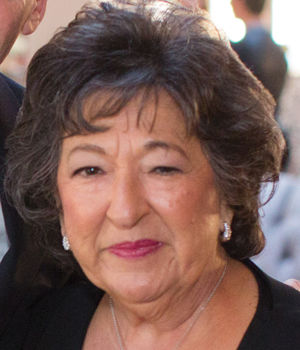The arts have the power to heal community divisions
Published July 6, 2018
As we approach Aug. 9, which will be the fourth anniversary of that fateful day when the Ferguson tragedy took place, I am again reminded of the power of the arts.
On a trip to Japan a few years ago, our guide told us of the Maeda Clan, rulers in the city of Kanazawa in the 16th century, and how they turned from the sword to using the arts and culture to reunite and heal Japan after 150 years of civil war.
I remember coming back home and finding some incredibly moving and powerful reactions to the Ferguson situation expressed through the arts.
In 2014, Washington University launched a multi-year project called “The Divided City: An Urban Humanities Initiative,” with the generous support of the Mellon Foundation, the Center for the Humanities, in partnership with the College and Graduate School of Architecture and Urban Design. The initiative’s goal was to bring humanities scholars into productive interdisciplinary dialogue with architects, urban designers, landscape architects, legal scholars, sociologists, geographers, cartographers, and others around one of the most persistent and vexing issues in urban studies: segregation.
Brooklyn-based artist Mariam Ghani had a fellowship at Washington University in 2014-2015 and was in St. Louis during the Ferguson protests. In 2015, the St. Louis Art Museum featured a short film, images and a sound installation created during her fellowship. The film was based loosely on the noir novel “The City and the City,” by China Miéville. The film was a fictional narrative with elements drawn from St. Louis’ past and present. Part of it took place in Kinloch, which is close to Ferguson and has had many similar issues. In a Q&A for a Washington University publication, Ghani said Ferguson was a subtext for the show, but she was “also interested in making work that goes beyond the immediate moment to look at the deeper structures and longer histories of a place.” Although the show is long gone, you can still view works from the show — and an excerpt of the video online at http://mariamghani.com/work/364.
Susan Colangelo also began her project, St. Louis Story Stitchers, before Ferguson. The Story Stitchers is an artist collective dedicated to documenting St. Louis through art and word to promote understanding, civic pride, intergenerational relationships and literacy. The nonprofit brings together professional artists and urban youth ages 15-24 to create social change. They find ways to tell local stories through works of art, writing and performance in the hopes of creating understanding, civic pride, intergenerational relationships and literacy in order “to shift perceptions and realities and bring hope to the Saint Louis community,” according to the group’s website. St. Louis Story Stitchers’ “Pick the City UP Tour” has several shows scheduled this summer (2018) — get details online at http://storystitchers.org/2018-live-shos.
In recent years, Cecilia Nadal’s Gitana Productions, whose motto is “Global Healing Through the Arts,” staged “Black and Blue” by Lee Patton Chiles. The original play was based on interviews with police officers, protesters and members of the African-American community about the shooting of Michael Brown Jr. in Ferguson. The play is about hope and healing, exploring assumptions that all black men are dangerous, and that all cops are bad. Due to the play’s importance to St. Louis, Gitana offered numerous free performances at community institutions and schools.
A few years back, I attended an incredible morning at McClure High School in Ferguson. Norleen Nosri, then a Clay Artist-in-Residence at Craft Alliance Center of Art and Design, worked with the students, faculty, and staff to bring the event to life. A small and dedicated team of student designers crafted the clay bases which held the porcelain cups which we drank from. The cups displayed the hopes, dreams, and wishes of the entire student body, inscribed by the students themselves. It is the hope of all those involved that the art-making experience will help aid in the healing of the community and the students who call it home. The event was entitled “CommuniTea.”
As we approach the anniversary of the Ferguson tragedy, I am thankful the arts community in St. Louis is thriving and really cares about putting it all back together and working on our problems. I, for one, have all the faith in the world that the arts are our saving grace.
















